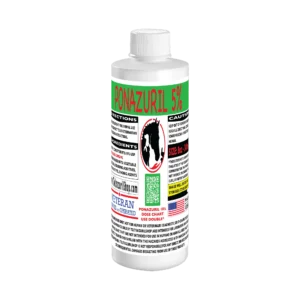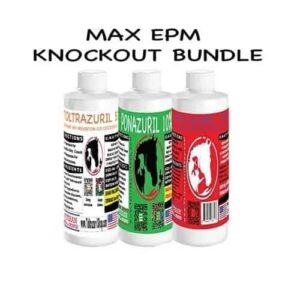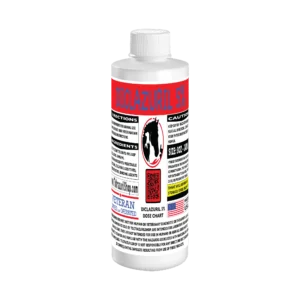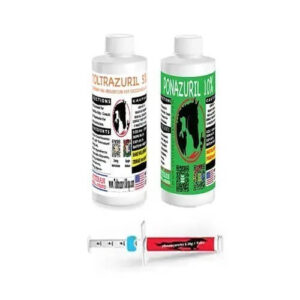-
De-Wormers
Blackout EPM & Coccidia Solution: Fast-Acting Treatment for Coccidiosis and EPM Symptoms
Rated 0 out of 5$119.99Original price was: $119.99.$69.95Current price is: $69.95. Add to cart -
Animal Products
Ponazuril Liquid Solution
$19.95 – $499.95 Select options This product has multiple variants. The options may be chosen on the product pageRated 0 out of 5 -
Animal Products
Max EPM Bundle for Horses – Toltrazuril Shop
Rated 0 out of 5$169.99Original price was: $169.99.$99.95Current price is: $99.95. Add to cart -
Animal Products
Toltrazuril Liquid Solution
$4.95 – $999.95 Select options This product has multiple variants. The options may be chosen on the product pageRated 0 out of 5 -
Animal Products
Diclazuril 5% Liquid Solution
$19.95 – $29.95 Select options This product has multiple variants. The options may be chosen on the product pageRated 0 out of 5 -
Animal Products
EPM & Ulcer Eliminator Bundle for Horses
Rated 0 out of 5$269.95Original price was: $269.95.$199.95Current price is: $199.95. Add to cart
EPM Treatment – Trusted Solutions for Equine Protozoal Myeloencephalitis
At EPM Treatment, we are committed to providing high-quality, scientifically formulated solutions to help your horses recover from Equine Protozoal Myeloencephalitis (EPM) and other parasitic infections. Our specialized range of de-wormers and liquid solutions ensures your horses receive the best care to restore their health, vitality, and performance.
Effective EPM & Parasite Treatment for Horses
EPM is a serious neurological disease affecting horses, caused by protozoal parasites. It can lead to muscle loss, weakness, and coordination issues. Our advanced treatment solutions help combat EPM and provide faster recovery, ensuring your horse stays strong and active.
Our Best-Selling Products
- Blackout EPM & Coccidia Solution – A fast-acting treatment for Coccidiosis and EPM symptoms, formulated to support neurological recovery and gut health.
- Ponazuril Liquid Solution – One of the most effective treatments for EPM, helping horses fight protozoal infections and regain mobility.
- Toltrazuril Liquid Solution – A broad-spectrum solution designed to eliminate coccidia and other parasites while supporting intestinal health.
- Diclazuril 5% Liquid Solution – A powerful alternative for treating EPM, offering protection against neurological damage caused by protozoal infections.
- Max EPM Bundle – Knockout Formula – A complete EPM recovery package, combining the best of Ponazuril and Blackout EPM for comprehensive treatment.
- EPM & Ulcer Eliminator Bundle – A dual-action solution targeting both EPM and gastric ulcers, ensuring your horse gets the care it needs for total well-being.
Why Choose EPM Treatment?
- Veterinarian-Approved Formulas – Our products are crafted based on research and recommendations from leading equine health experts.
- Fast & Effective Recovery – Designed to combat EPM symptoms quickly, reducing neurological damage and restoring mobility.
- High-Quality Ingredients – We use pharmaceutical-grade compounds to deliver safe and efficient parasite elimination.
- Affordable Treatment Options – Competitive pricing ensures your horse gets the best treatment without breaking the bank.
- Trusted by Horse Owners & Trainers – Our products have helped countless horses recover and perform at their best.
Get Started Today
If your horse is showing signs of EPM, coccidiosis, or other protozoal infections, don’t wait! Early treatment is key to a full recovery. Browse our Shop to find the best solution for your horse’s needs.
Have Questions?
We’re here to help! Contact us today for expert guidance on choosing the right EPM treatment.
EPM Treatment – Restoring Strength, Health & Performance for Your Horses





